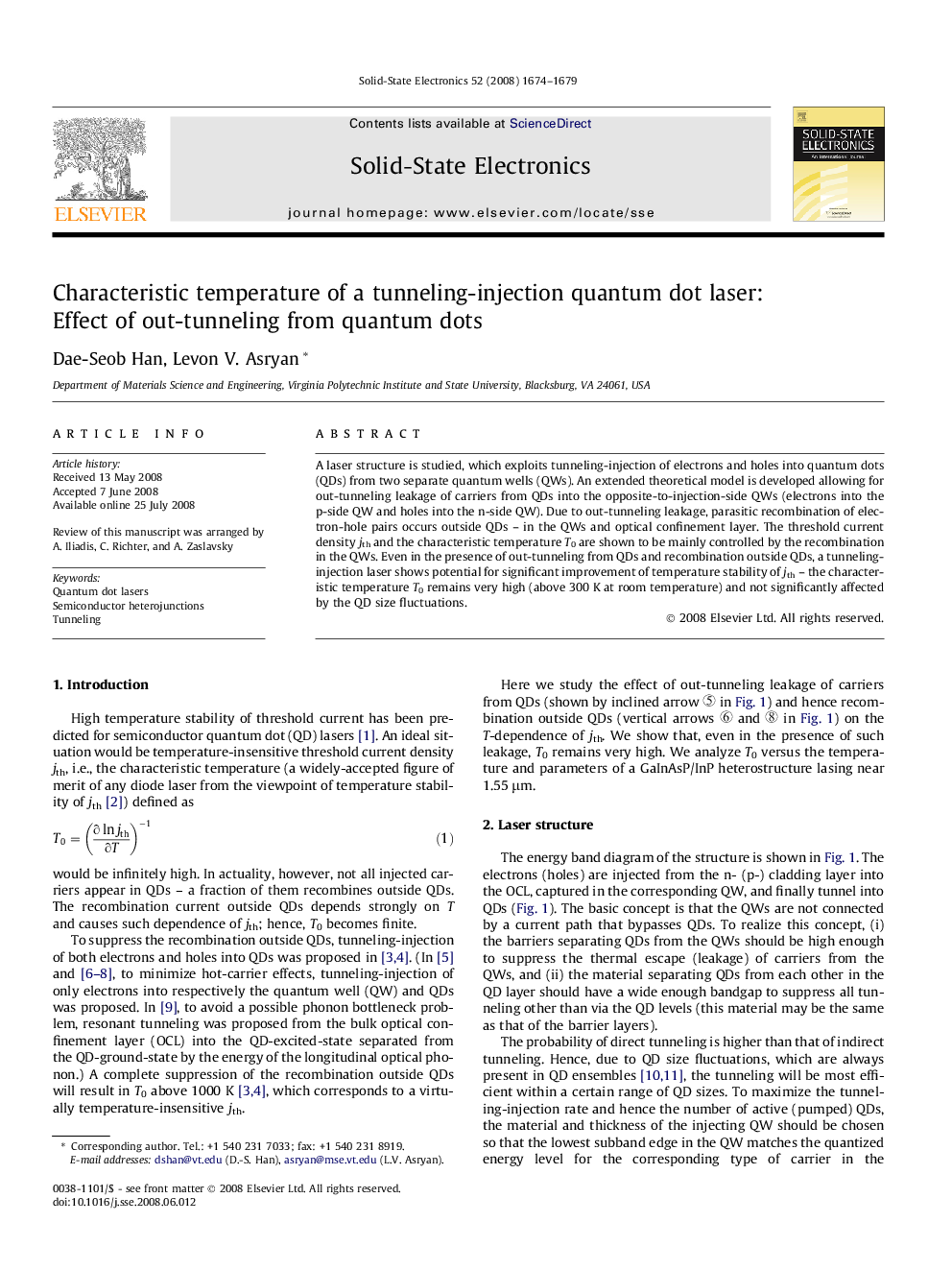| Article ID | Journal | Published Year | Pages | File Type |
|---|---|---|---|---|
| 749204 | Solid-State Electronics | 2008 | 6 Pages |
A laser structure is studied, which exploits tunneling-injection of electrons and holes into quantum dots (QDs) from two separate quantum wells (QWs). An extended theoretical model is developed allowing for out-tunneling leakage of carriers from QDs into the opposite-to-injection-side QWs (electrons into the p-side QW and holes into the n-side QW). Due to out-tunneling leakage, parasitic recombination of electron-hole pairs occurs outside QDs – in the QWs and optical confinement layer. The threshold current density jth and the characteristic temperature T0 are shown to be mainly controlled by the recombination in the QWs. Even in the presence of out-tunneling from QDs and recombination outside QDs, a tunneling-injection laser shows potential for significant improvement of temperature stability of jth – the characteristic temperature T0 remains very high (above 300 K at room temperature) and not significantly affected by the QD size fluctuations.
